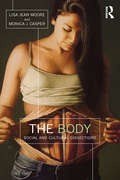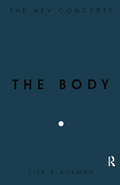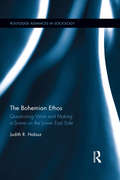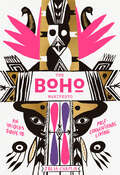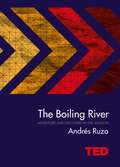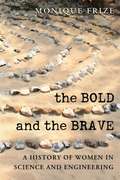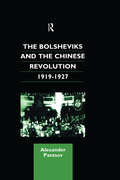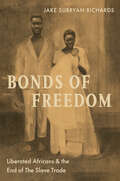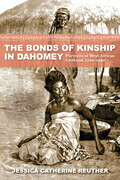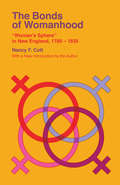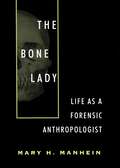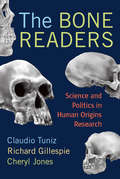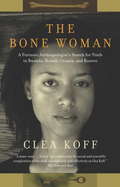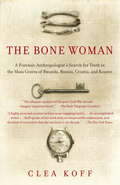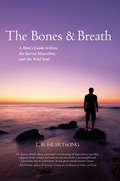- Table View
- List View
The Body: Social and Cultural Dissections (Biopolitics Ser.)
by Monica J. Casper Lisa Jean MooreThis college-level handbook offers a comprehensive and accessible overview of sociological and cultural perspectives on the human body. Organized along the lines of a standard anatomical textbook delineated by body parts and processes, this volume subverts the expected content in favor of providing tools for social and cultural analysis. Students will learn about the human body in its social, cultural, and political contexts, with emphasis on multiple, contested meanings of the body, body parts, and systems. Case studies, examples, and discussion questions are both US-based and international. Advancing critical body studies, the book explicitly discusses bodies in relation to race, class, gender, sexuality, ability, age, health, geography, and citizenship status. The framing is sociological rather than biomedical, attentive to cultural meanings, institutional practices, politics, and social problems. The authors use commonly understood anatomical frames to discuss social, cultural, political, and ethical issues concerning embodiment.
The Body: The Key Concepts
by Lisa BlackmanThoroughly updated and revised throughout with brand new chapters on affective bodies, indeterminate bodies, assemblaged bodies and a new conclusion, and featuring essay and classroom questions for classroom use, The Body: Key Concepts, Second Edition, presents a concise and up-to-date introduction to, and analysis of, the complex and influential debates around the body in contemporary culture. Lisa Blackman outlines and illuminates those debates which have made the body central to current interdisciplinary thinking across the arts, humanities and sciences. Since body studies hit the mainstream, it has grown in new regions, including China, and moved in new directions to question what counts as a body and what it means to have and be a body in different contexts, milieu and settings. Lisa Blackman guides the reader through socio-cultural questions around representation, performance, class, race, gender, disability and sexuality to examine how current thinking about the body has developed and been transformed. Blackman engages with classic anthropological scholarship from Nancy Scheper-Hughes and Margaret Lock, revisits black feminist writings from the 1980s, as well as engaging with recent debates, thought and theorists who are inventing new concepts, methods and ways of apprehending embodiment which challenge binary and dualistic categories. It provides an overview of the proliferation of body studies into other disciplines, including media and cultural studies, philosophy, gender studies and anthropology, as well as mapping the future of body studies at the intersections of body and affect studies.
The Body: The Key Concepts (The\key Concepts Ser.)
by Lisa BlackmanQuestions around 'the body' are central to social theory. Our changing understanding of the body now challenges the ways we conceive power, ideology, subjectivity and social and cultural process. The Body: the key concepts highlights and analyses the debates which make the body central to current sociological, psychological, cultural and feminist thinking. Today, questions around the body are intrinsic to a wide range of debates - from technological developments in media and communications, to socio-cultural questions around representation, performance, class, race, gender and sexuality, to the more 'physical' concerns of health and illness, sleep, diet and eating disorders, body parts and the senses.The Body: the key concepts is the ideal introduction for any student seeking a concise and up-to-date analysis of the complex and influential debates around the body in contemporary culture.
The Bohemian Ethos: Questioning Work and Making a Scene on the Lower East Side (Routledge Advances in Sociology #143)
by Judith R. HalaszThe iconoclastic ingenuity of bohemians, from Gerard de Nerval to Allen Ginsberg, continually captivates the popular imagination; the worlds of fashion, advertising, and even real estate all capitalize on the alternative appeal of bohemian style. Persistently overlooked, however, is bohemians' distinctive relationship to work. In this book, sociologist Judith R. Halasz examines the fascinating junctures between bohemian labor and life. Weaving together historiography, ethnography, and personal experiences of having been raised amidst downtown New York's bohemian communities, Halasz deciphers bohemians' unconventional behaviors and attitudes towards employment and the broader work world. From the nineteenth-century harbingers on Paris' Left Bank to the Beats, Underground, and more recent bohemian outcroppings on New York's Lower East Side, The Bohemian Ethos traces the embodiment of a politically charged yet increasingly precarious form of cultural resistance to hegemonic social and economic imperatives.
The Boho Manifesto: An Insider's Guide to Postconventional Living
by Julia ChaplinThe bohemian disruption has arrived. Microdosing psychedelics has become the new business learning tool, spiritual ceremonies and ideas festivals are now coveted pastimes, and Burning Man is already a bigger cultural touchstone than Woodstock. Written by boho-from-birth Julia Chaplin, The Boho Manifesto is here to illuminate the revolution. This finely detailed and richly illustrated handbook is the essential guide to what lies beyond the experience of everyday conformity. You’ll learn how to quit the gym and go dancing instead and how to become a sex-positive tantric unicorn. And, should you be ready, there’s advice on how to leave your cubicle behind and embrace the life of a nomadic entrepreneur—or at least a nomad.
The Boiling River
by Andrés RuzoPart of the TED series: The Boiling River This fantastical tale - which sent scores of Spanish conquistadores to their death during the great age of discovery - paints an intoxicating image of shamans and spells, forest-dwelling creatures and a river so hot it can boil your tea - or cook you alive. Ruzo relays the thrill of scientific discovery, the challenge of ecological conservation and the exuberant knowledge that natural wonders still holds many secrets. Ruzo's underlying message is one that will resonate deeply with readers around the world. He makes the compelling case that there are still extraordinary natural wonders to be discovered, but the chance of finding them is in jeopardy if we don't actively protect the environment. A National Geographic Young Explorer, Ruzo's fresh and exciting voice brings to life the Peruvian legend of the river, deep in the Amazon, that boils as if a fire burns below. The story haunted Ruzo throughout his childhood; until twenty years on, Ruzo - now a geologist - heard his aunt mention visiting this strange and mysterious river. Determined to prove it a legend, Ruzo set out on a journey deep, the results of which would astound him and lead him to a new obsession, discovering the secret behind this boiling river. Ultimately, The Boiling River is more than a quest for scientific discovery - it's the journey of a young man trying to understand his moral obligation to protect a sacred site from misuse, neglect, and even from his own discovery.
The Bold and the Brave: A History of Women in Science and Engineering
by Monique FrizeThe Bold and the Brave investigates how women have striven throughout history to gain access to education and careers in science and engineering. Author Monique Frize, herself an engineer for over 40 years, introduces the reader to key concepts and debates that contextualize the obstacles women have faced and continue to face in the fields of science and engineering. She focuses on the history of women’s education in mathematics and science through the ages, from antiquity to the Enlightenment. While opportunities for women were often purposely limited, she reveals how many women found ways to explore science outside of formal education. The book examines the lives and work of three women –Sophie Germain, Mileva Einstein, and Rosalind Franklin – that provide excellent examples of how women’s contributions to science have been dismissed, ignored or stolen outright. She concludes with an in-depth look at women’s participation in science and engineering throughout the twentieth century and the current status of women in science and engineering, which has experienced a decline in recent years. To encourage more young women to pursue careers in science and engineering she advocates re-gendering the fields by integrating feminine and masculine approaches that would ultimately improve scientific and engineering endeavours.
The Bolsheviks and the Chinese Revolution 1919-1927 (Chinese Worlds)
by Alexander PantsovBased mainly on unknown Russian archival sources which have previously been unobtainable, this book analyses the Bolshevik concepts of the Chinese revolution and their reception in China. Issues include the role of the three Bolshevik leaders, Lenin, Stalin, and Trotsky in trying to lead the Chinese Communists to victory, the real nature of the Trotsky-Stalin split in the Comintern, and a dramatic history of the Chinese Oppositionist movement in Soviet Russia.
The Bombay Country Ships 1790-1833
by Anne BulleyConcentrates on the period 1790-1833, especially the early nineteenth century when the Bombay merchant fleet was at its zenith, studying the ships, their trade and the men who owned or sailed in them. The picture is built up from a mass of details and references unearthed in the English East India Company's records and elsewhere, and includes contemporary experiences of sailing in these ships.
The Bondian Cold War: The Transnational Legacy of a Cultural Icon (Routledge Studies in Espionage and Culture)
by Martin D. BrownJames Bond, Ian Fleming’s irrepressible and ubiquitous ‘spy,’ is often understood as a Cold Warrior, but James Bond’s Cold War diverged from the actual global conflict in subtle but significant ways. That tension between the real and fictional provides perspectives into Cold War culture transcending ideological and geopolitical divides. The Bondiverse is complex and multi-textual, including novels, films, video games, and even a comic strip, and has also inspired an array of homages, copies, and competitors. Awareness of its rich possibilities only becomes apparent through a multi-disciplinary lens. The desire to consider current trends in Bondian studies inspired a conference entitled ‘The Bondian Cold War,’ convened at Tallinn University, Estonia in June 2019. Conference participants, drawn from three continents and multiple disciplines – film studies, history, intelligence studies, and literature, as well as intelligence practitioners – offered papers on the literary and cinematic aspects of the ‘spy’, discussed fact versus fiction in the Bond canon, went in search of a global Bond, and pondered gender and sexuality across the Bondiverse. This volume of essays inspired by that conference, suitable for students, researchers, and anyone interested in Cold War culture, makes vital contributions to understanding Bond as a global phenomenon, across traditional divisions of East and West, and beyond the end of the Cold War from which he emerged.
The Bondian Cold War: The Transnational Legacy of a Cultural Icon (Routledge Studies in Espionage and Culture)
by Martin D. BrownJames Bond, Ian Fleming’s irrepressible and ubiquitous ‘spy,’ is often understood as a Cold Warrior, but James Bond’s Cold War diverged from the actual global conflict in subtle but significant ways.That tension between the real and fictional provides perspectives into Cold War culture transcending ideological and geopolitical divides. The Bondiverse is complex and multi-textual, including novels, films, video games, and even a comic strip, and has also inspired an array of homages, copies, and competitors. Awareness of its rich possibilities only becomes apparent through a multi-disciplinary lens.The desire to consider current trends in Bondian studies inspired a conference entitled ‘The Bondian Cold War,’ convened at Tallinn University, Estonia in June 2019. Conference participants, drawn from three continents and multiple disciplines – film studies, history, intelligence studies, and literature, as well as intelligence practitioners – offered papers on the literary and cinematic aspects of the ‘spy’, discussed fact versus fiction in the Bond canon, went in search of a global Bond, and pondered gender and sexuality across the Bondiverse.This volume of essays inspired by that conference, suitable for students, researchers, and anyone interested in Cold War culture, makes vital contributions to understanding Bond as a global phenomenon, across traditional divisions of East and West, and beyond the end of the Cold War from which he emerged.
The Bonds of Debt: Borrowing Against the Common Good
by Richard DienstThe credit crisis has pushed the whole world so far into the red that the gigantic sums involved defy understanding. On a human level, what does such an enormous degree of debt and insolvency mean? In this timely book, cultural critic Richard Dienst considers the financial crisis, global poverty, media politics and radical theory to parse the various implications of a world where man is born free but everywhere is in debt.Written with humor and verve, Bonds of Debt ranges across subjects—such as Obama’s national security strategy, the architecture of Prada stores, press photos of Bono, and a fairy tale told by Karl Marx—to capture a modern condition founded on fiscal imprudence. Moving beyond the dominant pieties and widespread anxieties surrounding the topic, Dienst re-conceives the world’s massive financial obligations as a social, economic, and political bond, where the crushing weight of objectified wealth comes face to face with new demands for equality and solidarity. For this inspired analysis, we are indebted to him.
The Bonds of Freedom: Liberated Africans and the End of the Slave Trade
by Jake Subryan RichardsThe story of the long fight for freedom of African captives rescued from the illegal slave trade only to be forced back into bondage The Bonds of Freedom tells the forgotten story of people seized from slave ships by maritime patrols, “liberated,” then forced into bonded labor between 1807 and 1880. Using extensive archival research from Sierra Leone, South Africa, Brazil, Cuba, the United Kingdom, and the United States, historian Jake Subryan Richards uncovers the contrasting ideas and practices of authoritarianism and freedom that empires and liberated Africans developed during the protracted end of the illegal slave trade. Following the Africans’ journeys from enslavement to liberation, Richards recounts their capture and embarkation on ships that participated in the vast slave trade to Brazil and Cuba, the maritime seizure of those ships, and the adjudication that assigned freed captives to bonded labor. The captives fought against their bondage as state agents limited their freedom of choice and movement. The liberated Africans’ story shows that, far from following a straightforward path to freedom, these men and women navigated anti-slave-trade laws that both subjected them to authoritarian control and provided a domain for them to create their own visions of freedom. Through meticulous research and engaging narrative, Richards sheds light on their legal battles, community-building efforts, and ongoing quest for justice and autonomy in the face of enduring challenges.
The Bonds of Kinship in Dahomey: Portraits of West African Girlhood, 1720–1940
by Jessica Catherine ReutherFrom the 1720s to the 1940s, parents in the kingdom and later colony of Dahomey (now the Republic of Benin) developed and sustained the common practice of girl fostering, or "entrusting." Transferring their daughters at a young age into foster homes, Dahomeans created complex relationships of mutual obligation, kinship, and caregiving that also exploited girls' labor for the economic benefit of the women who acted as their social mothers. Drawing upon oral tradition, historic images, and collective memories, Jessica Reuther pieces together the fragmentary glimpses of girls' lives contained in colonial archives within the framework of traditional understandings about entrustment. Placing these girls and their social mothers at the center of history brings to light their core contributions to local and global political economies, even as the Dahomean monarchy, global trade, and colonial courts reshaped girlhood norms and fostering practices. Reuther reveals that the social, economic, and political changes wrought by the expansion of Dahomey in the eighteenth century; the shift to "legitimate" trade in agricultural products in the nineteenth century; and the imposition of French colonialism in the twentieth all fundamentally altered—and were altered by—the intimate practice of entrusting female children between households. Dahomeans also valorized this process as a crucial component of being "well-raised"—a sentiment that continues into the present, despite widespread Beninese opposition to modern-day forms of child labor.
The Bonds of Love: Psychoanalysis, Feminism, and the Problem of Domincation
by Jessica BenjaminWhy do people submit to authority and derive pleasure even others have over them? What is the appeal of domination and submission, and why are they so prevalent in erotic life? Why is it so difficult for men and women to meet as equals? Why, indeed, do hey continue to recapitulate the positions of master and slave?In The Bonds of Love, noted feminist theorist and psychoanalyst Jessica Benjamin explains why we accept and perpetuate relationships of domination and submission. She reveals that domination is a complex psychological process which ensnares both parties in bonds of complicity, and shows how it underlies our family life, our social institutions, and especially our sexual relations, in spite of our conscious commitment to equality and freedom.
The Bonds of Womanhood: "Woman's Sphere" in New England, 1780-1835 (Veritas Paperbacks)
by Nancy F. CottThis Veritas edition of Nancy Cott&’s acclaimed study includes a new introduction by the author, situating the work for a new generation of readers. &“Elegant and convincing. . . . Better than any other work available, The Bonds of Womanhood describes both the classic attitudes of the nineteenth century toward women and the opposition to the oppression of women in the historical context from which they grew.&”—Willie Lee Rose, New York Review of Books &“A lovely, gentle, scholarly, and valuable book.&”—Doris Grumbach, New York Times Book Review
The Bone Orchard
by Joseph TrigoboffYablonsky was about to enter a world of the very rich, the very powerful the very talented, and the very corrupt. This was a world known as the best of everything. The question was who would want young men who were offering the very best sex anyone could imagine to wind up dead . . . ? The young man was beautiful-and dead. In life, Sean Maysfield was a gorgeous male stripper and an ultra-popular hustler. In death, he was the first of the boys to be found savagely slain. It is homicide detective Alvin Yablonsky's job to sort through all the dirty laundry of even the nicest people's lives and uncover all the nasty things they sometimes do to satisfy perverse lusts. But now he is obliged to put his usual cases on hold as he hunts the calculating killer who is turning New York's sexual underground into a cemetery. ...
The Bone Readers: Science and Politics in Human Origins Research
by Richard Gillespie Claudio Tuniz Cheryl JonesThe Bone Readers are a dedicated group of scholars who study the earliest human remains, their chemistry and DNA, their extinct floral and faunal contemporaries, and the geologic layers in which they were found. Their research leads them to theories about modern human origins that continually challenge conventional wisdom and cherished beliefs— about “Eve ,” Neanderthals, “hobbits,” and the Bering Straits, among others. Two leading Bone Readers and a science writer have penned a literate, authoritative summary of the current questions and the minefield of academic politics that surround it. Ideal for students in human origins or biological anthropology courses, and a delightful read.
The Bone Woman
by Clea KoffPublished ten years after the genocide in Rwanda, The Bone Woman is a riveting, deeply personal account by a forensic anthropologist sent on seven missions by the UN War Crimes Tribunal.To prosecute charges of genocide and crimes against humanity, the UN needs proof that the bodies found are those of non-combatants. This means answering two questions: who the victims were, and how they were killed. The only people who can answer both these questions are forensic anthropologists.Before being sent to Rwanda in 1996, Clea Koff was a twenty-three-year-old graduate student studying prehistoric skeletons in the safe confines of Berkeley, California. Over the next four years, her gruelling investigation into events that shocked the world transformed her from a wide-eyed student into a soul-weary veteran -- and a wise and deeply thoughtful woman. Her unflinching account of those years -- what she saw, how it affected her, who went to trial based on evidence she collected -- makes for an unforgettable read, alternately riveting, frightening and miraculously hopeful. Readers join Koff as she comes face to face with the human meaning of genocide: exhuming almost five hundred bodies from a single grave in Kibuye, Rwanda; uncovering the wire-bound wrists of Srebrenica massacre victims in Bosnia; disinterring the body of a young man in southwestern Kosovo as his grandfather looks on in silence. As she recounts the fascinating details of her work, the hellish working conditions, the bureaucracy of the UN, and the heartbreak of survivors, Koff imbues her story with an immense sense of hope, humanity and justice.From the Trade Paperback edition.
The Bone Woman: Among the Dead in Bosnia and Rwanda
by Clea KoffIn 1996, Clea Koff was a 23-year-old student studying prehistoric skeletons. Then she was sent to Rwanda by the UN to work with a team exhuming victims of the genocide. Her job was to find evidence to bring the perpetrators to trial. This is her account of her time in Rwanda and later, Bosnia. THE BONE WOMAN is her unflinching account of what she saw and how it affected her. It is an unforgettable read, alternately riveting, frightening and miraculously hopeful. 'Koff's story will 'stay with you for a long time'. ' - Sydney Morning Herald
The Bone and Sinew of the Land: America's Forgotten Black Pioneers and the Struggle for Equality
by Anna-Lisa CoxThe long-hidden stories of America's black pioneers, the frontier they settled, and their fight for the heart of the nationWhen black settlers Keziah and Charles Grier started clearing their frontier land in 1818, they couldn't know that they were part of the nation's earliest struggle for equality; they were just looking to build a better life. But within a few years, the Griers would become early Underground Railroad conductors, joining with fellow pioneers and other allies to confront the growing tyranny of bondage and injustice.The Bone and Sinew of the Land tells the Griers' story and the stories of many others like them: the lost history of the nation's first Great Migration. In building hundreds of settlements on the frontier, these black pioneers were making a stand for equality and freedom. Their new home, the Northwest Territory--the wild region that would become present-day Ohio, Illinois, Indiana, Michigan, and Wisconsin--was the first territory to ban slavery and have equal voting rights for all men. Though forgotten today, in their own time the successes of these pioneers made them the targets of racist backlash. Political and even armed battles soon ensued, tearing apart families and communities long before the Civil War. This groundbreaking work of research reveals America's forgotten frontier, where these settlers were inspired by the belief that all men are created equal and a brighter future was possible.
The Bones and Breath
by L. R. HeartsongIn The Bones and Breath, Heartsong asserts that we each have an essential gift to bring to the world and through actively embodying the soul-primarily via the body and our expanded, physical senses-we undertake a profound, transpersonal journey; one that serves humanity and the Earth at a crucial phase of our collective evolution. Our life task is not to transcend the body but to become fully human by descending into the bones and breath, to there discover the gift our soul has to offer to the 'more-than-human’ world. Heartsong seeks to bring men out of their heads and down into the bodysoul, there to discover their personal authenticity as a wild soul. Eros is the key. Eros is something much more than romantic love-it is the elemental force of allurement that plays a pivotal role in our evolution as conscious beings and pulls us towards our destiny. The Sacred Masculine is an important archetype now making a much-needed return to assist humanity, as mankind shifts from being the most destructive force on the planet to a life-sustaining one. Interwoven with personal stories and seven primary Soul Skills and embodiment exercises, The Bones and Breath is "how-to" manual for a soul-centered life.
The Bones and Breath
by L. R. HeartsongIn The Bones and Breath, Heartsong asserts that we each have an essential gift to bring to the world and through actively embodying the soul-primarily via the body and our expanded, physical senses-we undertake a profound, transpersonal journey; one that serves humanity and the Earth at a crucial phase of our collective evolution. Our life task is not to transcend the body but to become fully human by descending into the bones and breath, to there discover the gift our soul has to offer to the 'more-than-human' world. Heartsong seeks to bring men out of their heads and down into the bodysoul, there to discover their personal authenticity as a wild soul.Eros is the key. Eros is something much more than romantic love-it is the elemental force of allurement that plays a pivotal role in our evolution as conscious beings and pulls us towards our destiny. The Sacred Masculine is an important archetype now making a much-needed return to assist humanity, as mankind shifts from being the most destructive force on the planet to a life-sustaining one. Interwoven with personal stories and seven primary Soul Skills and embodiment exercises, The Bones and Breath is "how-to" manual for a soul-centered life.
The Bones of the Earth
by Howard MansfieldThe Bones of The Earth is a book about landmarks, but of the oldest kind--sticks and stones. For millennia this is all there was: sticks and stones, dirt and trees, animals and people, the sky by day and night. The Lord spoke through burning bushes, through lightning and oaks. Trees and rocks and water were holy. They are commodities today and that is part of our disquiet. Howard Mansfield explores the loss of cultural memory, asking: What is the past? How do we construct that past? Is it possible to preserve the past as a vital force for the future? He writes eloquently on the land and time, on how to be a tourist of the near-at-hand, and on the forces that try to topple us. From the author of In the Memory House and The Same Ax, Twice comes The Bones of The Earth, a stunning call for reinventing our view of the future.
